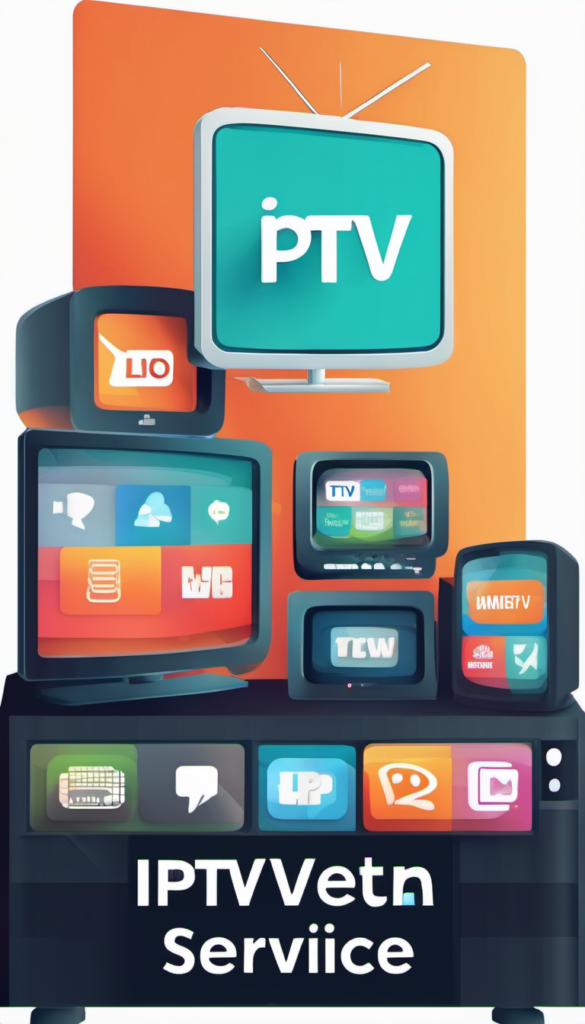The Reselling business model is incredibly versatile, catering to a wide range of industries and markets. Understanding the various types of resellers can help aspiring entrepreneurs determine which model aligns best with their goals, skills, and target audience. Below, we’ll explore the primary categories of resellers.

Product Resellers
Product resellers focus on buying and selling tangible goods, often sourced directly from manufacturers, distributors, or wholesalers. This is one of the most traditional forms of reselling and remains highly popular.
Key Characteristics of Product Reselling
- Inventory Management: Many product resellers maintain physical inventory, though some opt for dropshipping to avoid warehousing costs.
- Popular Niches: Electronics, fashion, health products, and home goods are top categories.
- Example: Retailers like Walmart or small-scale eBay sellers who source products in bulk.
Advantages of Product Reselling
- High consumer demand for physical goods.
- Opportunity to sell trending or seasonal products.
Challenges
- Managing shipping and returns.
- Fluctuating inventory costs.
| Pros of Product Reselling | Cons of Product Reselling |
|---|---|
| Wide market appeal | Requires storage or warehousing |
| Potential to build a recognizable brand | Logistics challenges like shipping delays |
Service Resellers
Service resellers focus on intangible offerings, such as SaaS (Software as a Service), web hosting, and IPTV subscriptions. These businesses purchase services in bulk from providers and resell them to individual customers.
Examples of Service Reselling
- SaaS Reselling: Offering popular tools like CRM software under a partner agreement.
- Hosting Reselling: Selling web hosting plans by leasing server space from larger hosting providers.
- IPTV Reselling: Distributing IPTV subscriptions to end users.
Why Service Reselling Works
- Recurring Revenue: Services like subscriptions ensure regular income.
- Minimal Overhead: No physical inventory or warehousing required.
- Global Reach: Services can often be sold worldwide without geographic limitations.
Case Study:
John, an IPTV reseller, began his business with a $500 investment. By focusing on customer support and regional marketing, he grew his client base to over 1,000 users within a year, earning consistent monthly revenue.
Wholesale vs. Retail Resellers
The distinction between wholesale and retail resellers lies in their target customers and sales volume.
Wholesale Resellers
- Sell in bulk to other businesses or retailers.
- Operate with lower profit margins but higher sales volumes.
- Example: A wholesaler supplying beauty products to salons.

Retail Resellers
- Sell directly to end consumers.
- Focus on personalized marketing and branding.
- Example: An online boutique selling individual fashion items.
| Aspect | Wholesale Resellers | Retail Resellers |
|---|---|---|
| Target Audience | Businesses | Individual consumers |
| Sales Volume | High | Lower compared to wholesale |
| Profit Margins | Lower per item | Higher per item |
| Example | B2B distribution | Direct-to-consumer e-commerce |
Emerging Trends in Reselling
- Digital Product Reselling: Courses, e-books, and software licenses are growing niches with low risk and high scalability.
- Eco-Friendly Reselling: Sustainable products, such as reusable items and upcycled goods, are gaining popularity due to increased environmental awareness.
- Customized Products: Personalized goods, like engraved jewelry or custom T-shirts, offer a unique angle in competitive markets.
Quote:
“The beauty of reselling is its adaptability. Whether you choose physical products, services, or digital goods, there’s a market waiting for you.” — Emily Chen, Business Strategist
Why Become a Reseller?
The reseller business model offers a unique opportunity for aspiring entrepreneurs to start a business with relatively low investment while leveraging the popularity of existing products or services. Whether you’re looking for a side hustle or aiming to build a full-time business, reselling provides flexibility, scalability, and a proven path to profitability. Here’s why becoming a reseller could be the right choice for you.
1. Low Startup Costs
One of the most appealing aspects of reselling is its affordability. Unlike traditional businesses that require significant investment in manufacturing, reselling allows you to start with minimal capital.
Examples of Low Startup Costs
- Starting a dropshipping business requires no inventory and minimal upfront costs.
- Reselling digital services like IPTV subscriptions often involves just a reseller license fee.
Key Benefits
- No need to invest in product development or production.
- Lower financial risk compared to starting from scratch.
Fact: According to Shopify, dropshipping businesses can start with as little as $100 for setting up an online store.
2. Flexibility and Scalability
Reselling offers the freedom to work on your own terms. You can start small, scale your business gradually, and even operate it as a side hustle.
Flexible Business Models
- Part-time reselling: Manage your business during evenings or weekends.
- Full-time reselling: Dedicate yourself to building a scalable operation.
Scalability Examples
- E-commerce Growth: Start by selling on platforms like eBay or Amazon and transition to your own website.
- Service Reselling Expansion: Add new subscription tiers or service packages to grow your revenue streams.
| Aspect | Why It Matters |
|---|---|
| Work from Anywhere | No fixed office; ideal for digital nomads. |
| Adjustable Investment | Scale inventory and operations as profits grow. |
Case Study:
Sarah began reselling beauty products on Instagram with just 10 items. Within two years, she built her brand, launched an online store, and partnered with a major supplier. Her business now generates six figures annually.
3. Access to Existing Products and Services
As a reseller, you don’t need to create your own products. Instead, you leverage existing goods or services, saving time and effort while benefiting from their established market appeal.
Examples of Reselling Partnerships
- Tech Products: Partner with a supplier to resell trending gadgets like smartwatches or headphones.
- Subscription Services: Resell IPTV or SaaS tools that are in high demand globally.
Advantages
- Established products often come with built-in consumer trust.
- Suppliers or manufacturers may offer marketing support or training for resellers.
Quote: “Reselling allows you to focus on marketing and customer relationships rather than the complexities of production.” — Mark Davis, Business Consultant
4. Opportunity to Earn Recurring Revenue
Recurring revenue models are particularly attractive in the reseller space, especially for those offering subscription-based services.
Examples of Recurring Revenue in Reselling
- SaaS Reselling: Monthly or annual software subscriptions.
- IPTV Reselling: Continuous revenue from customer subscriptions.
Benefits of Recurring Revenue
- Predictable income stream.
- Easier to forecast and manage business growth.
5. Easy Entry into Established Markets
Reselling allows entrepreneurs to tap into markets that already have a proven demand. By selecting the right niche, you can benefit from consumer interest without needing to educate the market.
How to Choose the Right Market
- Research Demand: Use tools like Google Trends and Semrush to analyze market trends.
- Evaluate Competition: Look at what successful resellers are offering and identify gaps.
- Focus on Profitable Niches: Products or services with high demand but moderate competition are ideal.
| High-Demand Niches | Example Products/Services |
|---|---|
| Health & Wellness | Supplements, fitness equipment, wellness apps |
| Technology | Gadgets, accessories, and software licenses |
| Entertainment | IPTV, gaming subscriptions, and merchandise |

6. Learning Opportunities and Skill Development
Becoming a reseller offers valuable experience in business management, marketing, and customer service. These skills can translate to other entrepreneurial ventures or professional growth.
Skills You’ll Gain
- Sales and Marketing: Learn how to reach and convert customers effectively.
- Customer Service: Build lasting relationships and maintain loyalty.
- Financial Management: Understand pricing, profit margins, and expenses.
Reselling is more than just a way to make money—it’s a business model that offers freedom, growth, and sustainability. Whether you’re drawn by the low investment, scalability, or opportunity to access established products, the benefits of becoming a reseller make it a viable path for many aspiring entrepreneurs.
How to Start a Reseller Business
Starting a reseller business is a structured process that involves research, planning, and execution. Whether you’re selling products, services, or both, the following steps will help you launch and grow a successful reseller business.
1. Research Your Niche
Choosing the right niche is the foundation of a profitable reseller business. A niche defines the market segment you’ll focus on and determines the products or services you offer.
How to Identify a Profitable Niche
- Analyze Demand: Use tools like Google Trends, Ahrefs, or Semrush to check keyword search volumes and trends.
- Evaluate Competition: Look for markets with demand but moderate competition to avoid overcrowded niches.
- Understand Your Audience: Define your ideal customer, including their needs, preferences, and pain points.
Examples of Profitable Reselling Niches
- Physical Products: Electronics, fitness gear, or eco-friendly products.
- Services: IPTV subscriptions, SaaS tools, or virtual assistant services.
- Digital Goods: E-books, online courses, or software licenses.
| Niche | Target Audience | Potential Products/Services |
|---|---|---|
| Fitness Enthusiasts | Gym-goers, personal trainers | Dumbbells, fitness trackers |
| Gamers | Casual and professional gamers | Gaming keyboards, subscriptions |
| Eco-conscious Buyers | Environmentally aware consumers | Reusable goods, sustainable items |
2. Find Reliable Suppliers or Partners
The success of your reseller business heavily depends on the quality and reliability of your suppliers. A good supplier ensures you have access to high-quality products or services at competitive prices.
Where to Find Suppliers
- Wholesale Platforms: Alibaba, Oberlo, or SaleHoo for product sourcing.
- Direct Partnerships: Reach out to manufacturers directly for bulk purchasing agreements.
- Service Providers: For reselling digital services like IPTV or hosting, partner with reputable providers offering reseller programs.
What to Look for in a Supplier
- Product/Service Quality: Read reviews and request samples to ensure high standards.
- Pricing: Negotiate rates to maintain healthy profit margins.
- Reliability: Choose suppliers with a proven track record of timely delivery and consistent availability.
Pro Tip: Diversify your suppliers to avoid disruptions if one fails to deliver.
3. Set Up Your Business Structure
Before you start selling, it’s crucial to establish a legal and professional framework for your business.
Key Steps to Structure Your Business
- Choose a Business Name: Pick a name that reflects your niche and is easy to remember.
- Register Your Business: Check local laws and register your business entity (e.g., sole proprietorship, LLC, or corporation).
- Obtain Licenses: Some products or services may require reseller licenses or permits.
| Business Structure | Best For | Key Advantages |
|---|---|---|
| Sole Proprietorship | Small, single-owner businesses | Simple setup, low costs |
| Limited Liability Company | Growing resellers | Limited personal liability |
| Corporation | Large-scale operations | Easy to raise capital |
Financial Setup
- Open a dedicated business bank account.
- Use accounting software like QuickBooks or Wave for tracking finances.
- Ensure compliance with taxes and other legal requirements.
4. Create a Sales and Marketing Plan
A solid marketing plan ensures you attract customers and grow your reseller business effectively.
Marketing Strategies for Resellers
- Leverage Social Media: Platforms like Instagram, TikTok, and Facebook are great for showcasing products and services.
- Invest in SEO: Optimize your website with relevant keywords, including “reseller” and niche-specific terms.
- Run Paid Ads: Use Google Ads or social media ads to target potential customers.
- Content Marketing: Create valuable content like blogs, how-to guides, or videos that educate your audience.
Building an Online Presence
- Launch a professional website with e-commerce capabilities.
- List your products or services on popular platforms like Amazon, eBay, or Etsy.
- Collect and display customer reviews to build trust.
Example Marketing Plan:
| Channel | Tactic | Goal |
|---|---|---|
| Social Media | Post daily updates and run ads | Drive traffic and engagement |
| SEO | Blog about niche-related topics | Improve search rankings |
| Email Marketing | Send newsletters with promotions | Retain customers and boost sales |
5. Launch Your Business
With your research, suppliers, and marketing plan in place, it’s time to launch your reseller business.
Initial Steps to Take
- List your first set of products or services on your website and marketplaces.
- Announce your launch on social media, leveraging promotions to attract your first customers.
- Monitor early feedback and adjust based on customer preferences.
Tracking Performance
Use tools like Google Analytics or Shopify reports to monitor traffic, sales, and customer behavior. This will help you refine your strategies and grow your business.
Starting a reseller business is an exciting journey, but it requires careful planning and execution. By choosing the right niche, partnering with reliable suppliers, and creating a strong marketing strategy, you can build a profitable and scalable venture.
Challenges Resellers Face (And How to Overcome Them)
Every business comes with its share of challenges, and reselling is no exception. While the model is relatively straightforward, resellers often face obstacles ranging from competition to supply chain issues. Here, we’ll explore the common challenges resellers encounter and strategies to overcome them effectively.
1. Intense Competition
Reselling is a popular business model, leading to saturated markets in certain niches. Competing with established brands and other resellers can make it difficult to stand out.
Solutions
- Differentiate Your Offerings: Add value to your products or services by bundling, offering discounts, or providing exceptional customer support.
- Focus on Niche Markets: Rather than targeting broad audiences, specialize in a specific demographic or need. For example, instead of selling generic fitness gear, focus on equipment for seniors or travelers.
- Build a Brand: Develop a unique identity through consistent branding, storytelling, and quality.
Case Study:
A reseller focusing on sustainable products saw success by marketing eco-friendly packaging and donating a portion of profits to environmental causes. This strategy helped them stand out in a crowded market.
2. Supplier Issues
Resellers rely on suppliers for inventory, and disruptions in the supply chain can lead to delayed deliveries, stock shortages, or quality issues.
Solutions
- Partner with Multiple Suppliers: Avoid dependency on a single supplier to minimize risks.
- Negotiate Agreements: Establish clear terms with suppliers regarding quality standards, delivery timelines, and returns.
- Use Inventory Management Tools: Platforms like TradeGecko or Zoho Inventory can help track stock levels and anticipate shortages.
Tip: Regularly audit your supplier relationships to ensure reliability and performance.
3. Price Wars and Low Profit Margins
When competing with other resellers, price wars can erode profits, making it harder to sustain the business.
Solutions
- Highlight Quality Over Price: Use your marketing to emphasize the unique benefits of your products or services.
- Upsell and Cross-Sell: Increase revenue per customer by suggesting complementary products or premium options.
- Focus on Value-Added Services: Offer perks like free shipping, extended warranties, or personalized customer support to justify higher prices.
| Strategy | Example | Benefit |
|---|---|---|
| Upselling | Suggesting a premium IPTV package | Higher profit margins |
| Cross-Selling | Recommending accessories for electronics | Increased average order value |
| Loyalty Programs | Rewarding repeat customers with discounts | Customer retention and loyalty |
4. Customer Acquisition and Retention
Finding and keeping customers is a common challenge for new resellers, especially in competitive markets.
Solutions
- Leverage Social Proof: Display reviews, testimonials, and case studies on your website and marketing channels.
- Invest in Content Marketing: Educate your audience with blog posts, how-to guides, or videos relevant to your niche.
- Personalize Customer Experiences: Use tools like HubSpot or Mailchimp to tailor communication and offers based on customer behavior.
Fact: Businesses that personalize customer experiences see an average revenue increase of 20%, according to a report by McKinsey.
5. Managing Returns and Refunds
Handling returns or refund requests can be time-consuming and costly, especially if you’re selling physical products.
Solutions
- Set Clear Policies: Outline return and refund terms on your website to manage customer expectations.
- Minimize Returns: Provide detailed product descriptions, high-quality images, and size guides to reduce errors.
- Streamline Processes: Use platforms like Returnly or Loop Returns to manage the logistics efficiently.
Pro Tip: For digital services like IPTV, offer trial periods or demos to reduce refund requests.
6. Staying Updated with Market Trends
Market trends evolve quickly, and resellers must stay ahead to remain relevant and competitive.
Solutions
- Use Trend Tools: Platforms like Google Trends, Semrush, and social media insights can help track emerging interests.
- Engage with Your Audience: Collect feedback regularly to understand changing customer preferences.
- Diversify Your Offerings: Continuously update your inventory or service list to include trending products.
Example: During the pandemic, many resellers pivoted to selling health-related items like masks, sanitizers, and fitness equipment to meet rising demand.
7. Time Management
Balancing inventory management, marketing, customer service, and logistics can overwhelm new resellers.
Solutions
- Automate Repetitive Tasks: Use tools like Zapier to automate processes like order tracking and email responses.
- Outsource Non-Core Activities: Delegate tasks such as social media management or customer support to freelancers or agencies.
- Prioritize Tasks: Focus on high-impact activities like building customer relationships and refining your marketing strategy.
Reselling comes with its challenges, but with careful planning, strategic thinking, and the right tools, these obstacles can be turned into opportunities. By staying adaptable and customer-focused, you’ll position your reseller business for long-term success.


